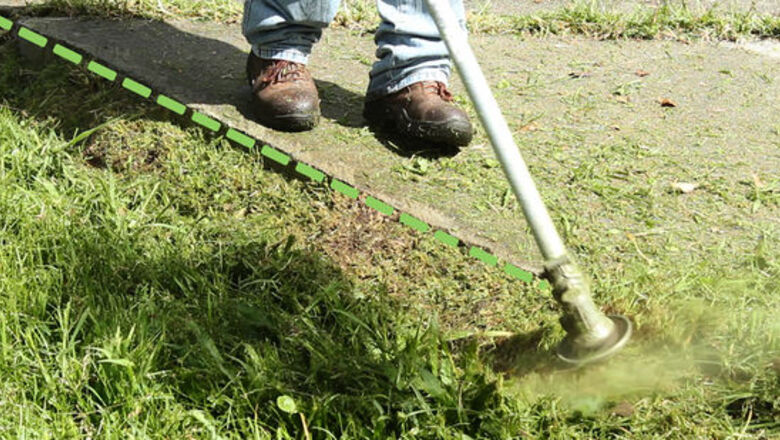
views
Edging Using a Power Edger or Weed Wacker
Use your power edger or weed wacker primarily around sidewalks and footpaths. When you edge your lawn, you have two options for which tool to use: You can use an electric or gas-powered edging tool, or you can use a manual edging tool. (We'll explain about the manual edging tool later.) Because you don't have the space to dig out extra mulch or dirt around sidewalks and footpaths, it's best to use a power edger in these situations. Power edgers will make short work of these borders. Opt for a power edger that is cheap, light, and straight. You can get power edgers relatively inexpensively, and you should — because who wants to spend a bunch of money on an edger? Opt for a light edger because you could spend longer amounts of time holding it up. And finally, unless you feel you need the "ergonomic" option, go for an edger with a straight body; it'll be easier to define a straight edge with one of these tools. When you purchase the edger, buy one or two replacement blades for it as well. The blades can really take a beating, even with the most practiced person running the edger. Be sure you also understand how to change out the blades when needed. There are some models of weed whackers that feature a multi-head design, meaning you can convert it into three or four other tools. This will cost considerably more than a straight weed wacker, but it may be worth it. Be sure you also have all the necessary safety equipment, including safety goggles/eyewear, long pants and boots, and earplugs.

Use your power edger along straight lines and right angles. A power edger is much more efficient than a manual edger, but that doesn't mean that it always gets the job done better. A power edger is great around straight lines, or lines where a raised footpath can guide you. A power edger is not so great around lines where the boundaries aren't so well defined; in these areas, where you want the edge to flow, it's best to use a manual edging tool if you can afford to.
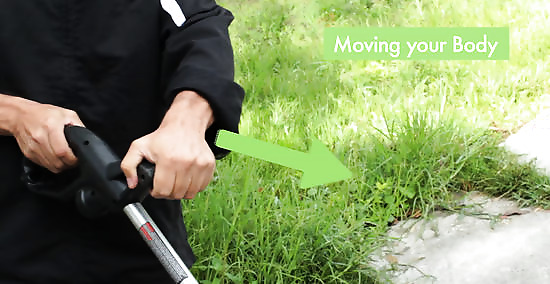
Walk holding the edging tool completely level and rigid. You want your body to move, not your arms. So turn the edging tool on, give it a little bit of power, and start slowly walking with the tool, holding your arms steady. Moving your body instead of your arms will ultimately make the cut on the grass much straighter.
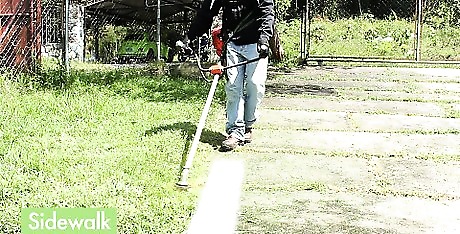
If you can, walk on the sidewalk or footpath as you edge. Instead of walking on the grass itself when you edge, walk on the sidewalk or footpath. Here's why: when you hold the edger out with your arms, your body naturally wants to bring your arms back closer to your body. If this happens when you're standing on the lawn itself, you start cutting into the lawn instead of merely lopping off the farthest edge. Over time, you'll find yourself redefining the edge each time (farther into your lawn) instead of using the same edge as a guide. If you're standing on the sidewalk while edging, however, your body's impulse to bring in your arms as you move along the border means much less damage, because you'll be edging air when your body autocorrects. This is an easy problem to fix, because it's not a problem at all. In addition, the sidewalk or pathway is most likely a more even, flatter surface than the lawn. Walking on the sidewalk can help you keep a steady pace.
Edge slowly but surely, taking time so that you don't have to rehash the same territory too many times. Power edgers are, well, powerful, so it's tempting to blaze through your lawn in record time. Too often, however, lazy execution produces lazy results. Take your time when you edge using a power tool. You'll find that you won't have to re-edge the same spot over and over again to achieve a clean look. Re-edging the same spot over and over again is likely to lead to a sloppy look. Remember to locate and mark any sprinkler heads to avoid damaging them.
Edging With a Manual Tool
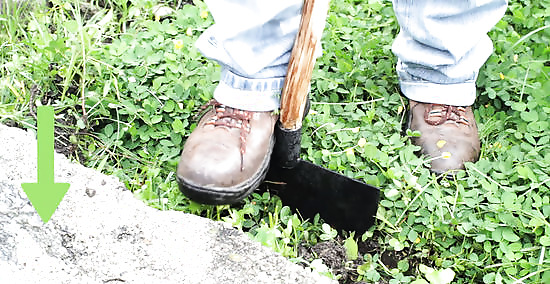
Get familiar with your half-moon manual edging tool. Your half-moon edger has a large blade in the shape of a half moon with an overhanging lip in the middle of the circle. This lip hits against soil at a uniform level every time you drive the half-moon into the ground, producing an even depth with each edge. Simply drive the edging tool into the ground as you would a shovel, down until the lip hits soil, rocking the edger from side to side, and then pull the handle back gently to dig soil and define your edge. Once you've defined your edges, take a shovel and shovel up any loose soil or mulch into a wheelbarrow. When using a manual edging tool, drive the half-moon into the ground completely straight (vertically), not at an angle. Not only will this help define your edge more clearly, but it will also inhibit the growth of rhizomes from growing into the edges of your lawn. Maintain your edging tool. Clean off any dirt or debris after each use. File away the edges of the half moon periodically to keep them sharp. There's nothing better than a sharp tool, and nothing worse than a dull one.

Use your manual edging tool to create fluid or flowing edges. Against the slight curve of a planting bed, the edging tool works fantastically. Simply spray paint your curved edge or lay down a garden hose onto the edge you want to create, and edge away. Of course, if you decide to use a garden hose as your guide, be extremely careful not to accidentally cut into it with your edging tool.
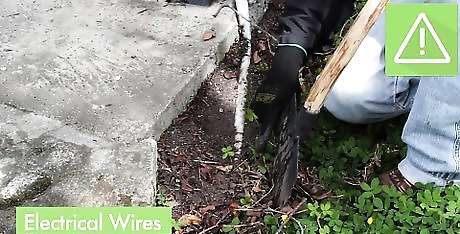
Be careful of electrical wires, plumbing pipes, and other subterranean hazards as you edge. Although they may be covered with PVC pipe that's difficult to cut into with an edger, it's better to be safe than sorry. Talk to your utilities company before edging out any large stretch of lawn and remember to edge gingerly. Before doing any digging, call the 811 Nationwide Locate call center and request that they locate any buried utilities. There is no charge of this service.
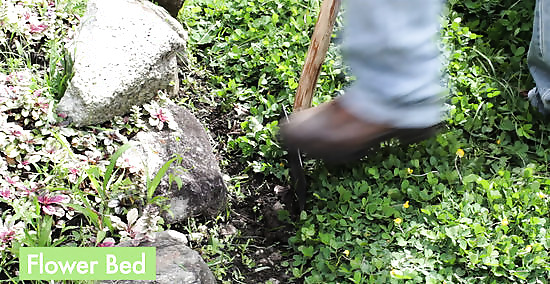
Edge around flower beds and planters with a manual edge. Flower beds and planters are perfect for using a manual edge because you can afford to take away a little soil or mulch when you edge. The process is the same. Just remember not to take away too much lawn when you edge; try to achieve the balance of taking away just enough to clearly define the edge but not so much that you've significantly reduced your lawn space.
Decide how you want to tackle trees and shrubs. The lawn around trees and shrubs can be edged either with a power edger or a half-moon. When using a half-moon, however, be especially careful of root growth. If the tree or shrub is older or has an extensive root system, consider edging with a power edger instead of actually digging into the soil and potentially cutting up roots. You can let the lawn edging border stick out approximately half to three-quarters of an inch. The inexpensive lawn edging is 3 inches high. But you should use at least 4 to 6 inches high lawn edging to prevent grass from growing underneath.




















Comments
0 comment